Gerard Dillon (1916-1971) Self in Inishlacken Oil on board, 31 x 37.5cm (12 x 14¼'') Signed; inscribed with title verso Exhibited: Gerard Dillon Early paintings of The West. The Dawson Gallery, 4-27 March, 1971 Cat No.27; 'Gerard Dillon Exhibition', Tulfarris Art Gallery, July 1980, Cat No. 22 where purchased Provenance: From the collection of the late Cyril Murray, a friend of the artist from the 1940s. Influenced by Van Gogh, Dillon enjoyed painting self-portraits in various mediums throughout his career. In the 1950s, his comic spirit endowed him to introduce quirky stand-ins alluding to his presence, records scattered on a floor, legs sticking out from the foreground, shoes tucked under a stool or socks dangling from a fireplace. Referring to these self-portraits, George Campbell remarked in 1974 in a tribute radio programme, practically everything he painted was a self- portrait-himself dickeyed up in some costume or another. This work, Self in Inishlacken relates to the year he lived with his cat, Suzy Blue Hole on Inishlacken Island, a remote picturesque island off the coast of Roundstone in 1951. Encouraged by Victor Waddington to spend more time in Connemara, Dillon bartered a cottage in exchange for a painting which came with two currachs. This work is not typical of Dillons style from this period which suggests it was executed after 1951. In semi-darkness, Dillon is depicted half-length wearing a brown jumper gazing directly at the viewer. Standing confidently, stone walls, a cottage and haystack appear on the right and on the left, the sea and mainland. Dillons lips are not smiling but his sideward glance regards us with smirking interest. In late 1950, critics labelled Dillons views of Connemara at his first solo show at Victor Waddingtons gallery as Stage Irish. In 1951, in the Envoy, Dillon defended himself in The Artists Speaks, I suppose these same critics call Synges Stage Irish, and deny that his work is art�Ǫ Interviewed years later on his views of critics, Dillon responded, Im too conceited to worry what a non-painter say but conceded, we are all children not just artists. We all like being patted on the head, for what we are or what we do. (Marion Fitzgerald The Artist Talks, Irish Times, 23/9/64 p.11) In 1994, James MacIntyre wrote Three Men on an Island an account of how he adapted to life on the Island in 1951 with Dillon and George Campbell MacIntyre was prompted to go to the Island after receiving a letter from Dillon inviting him to join him. Youll love it. Stone walls, thatched cottages, a real peasant life, just up your street. Youll need £15 for expenses, theres no rent as I have it for the year. Try and get over next month. Drop me a line when you are coming. Yours Gerard. Over several months, family and friends visited the Island including Drogheda artist, Nano Reid The two friends would regularly row over to the mainland to be entertained by the writer Kate OBrien. Learning of Dillons death in June, 1971, Kate OBrien recalled memories of Dillons time on Inishlacken in her column, Arts & Studies, Long Distance in the Irish Times, I remember one time he [Gerard] and Nano were inhabiting some old huts over on Inishlacken, a desolate island�ǪI was walking down by the Monastery, and I saw out on the quite rough water Nano and Gerard rowing like mad in a little bit of a currach. They were rowing for home, and I watched them, with anxiety. Because clearly neither was any kind of an oarsman, the tide was running against them, and clearly, they were rowing contrarywise to each other�ǪI have seldom seen anything funnier. In the last paragraph, she added He [Gerard] was very gentle, very kind; and was without pretension-indeed, he did not understand what pretension was. But he will be remembered�Ǫwe can be sure in his dear Belfast, and in such a quiet place as Roundstone. Popular among his friends, Dillons self-portraits charter his development as an artist and reveal his impish humour. Karen Reihill
Gerard Dillon (1916-1971) Self in Inishlacken Oil on board, 31 x 37.5cm (12 x 14¼'') Signed; inscribed with title verso Exhibited: Gerard Dillon Early paintings of The West. The Dawson Gallery, 4-27 March, 1971 Cat No.27; 'Gerard Dillon Exhibition', Tulfarris Art Gallery, July 1980, Cat No. 22 where purchased Provenance: From the collection of the late Cyril Murray, a friend of the artist from the 1940s. Influenced by Van Gogh, Dillon enjoyed painting self-portraits in various mediums throughout his career. In the 1950s, his comic spirit endowed him to introduce quirky stand-ins alluding to his presence, records scattered on a floor, legs sticking out from the foreground, shoes tucked under a stool or socks dangling from a fireplace. Referring to these self-portraits, George Campbell remarked in 1974 in a tribute radio programme, practically everything he painted was a self- portrait-himself dickeyed up in some costume or another. This work, Self in Inishlacken relates to the year he lived with his cat, Suzy Blue Hole on Inishlacken Island, a remote picturesque island off the coast of Roundstone in 1951. Encouraged by Victor Waddington to spend more time in Connemara, Dillon bartered a cottage in exchange for a painting which came with two currachs. This work is not typical of Dillons style from this period which suggests it was executed after 1951. In semi-darkness, Dillon is depicted half-length wearing a brown jumper gazing directly at the viewer. Standing confidently, stone walls, a cottage and haystack appear on the right and on the left, the sea and mainland. Dillons lips are not smiling but his sideward glance regards us with smirking interest. In late 1950, critics labelled Dillons views of Connemara at his first solo show at Victor Waddingtons gallery as Stage Irish. In 1951, in the Envoy, Dillon defended himself in The Artists Speaks, I suppose these same critics call Synges Stage Irish, and deny that his work is art�Ǫ Interviewed years later on his views of critics, Dillon responded, Im too conceited to worry what a non-painter say but conceded, we are all children not just artists. We all like being patted on the head, for what we are or what we do. (Marion Fitzgerald The Artist Talks, Irish Times, 23/9/64 p.11) In 1994, James MacIntyre wrote Three Men on an Island an account of how he adapted to life on the Island in 1951 with Dillon and George Campbell MacIntyre was prompted to go to the Island after receiving a letter from Dillon inviting him to join him. Youll love it. Stone walls, thatched cottages, a real peasant life, just up your street. Youll need £15 for expenses, theres no rent as I have it for the year. Try and get over next month. Drop me a line when you are coming. Yours Gerard. Over several months, family and friends visited the Island including Drogheda artist, Nano Reid The two friends would regularly row over to the mainland to be entertained by the writer Kate OBrien. Learning of Dillons death in June, 1971, Kate OBrien recalled memories of Dillons time on Inishlacken in her column, Arts & Studies, Long Distance in the Irish Times, I remember one time he [Gerard] and Nano were inhabiting some old huts over on Inishlacken, a desolate island�ǪI was walking down by the Monastery, and I saw out on the quite rough water Nano and Gerard rowing like mad in a little bit of a currach. They were rowing for home, and I watched them, with anxiety. Because clearly neither was any kind of an oarsman, the tide was running against them, and clearly, they were rowing contrarywise to each other�ǪI have seldom seen anything funnier. In the last paragraph, she added He [Gerard] was very gentle, very kind; and was without pretension-indeed, he did not understand what pretension was. But he will be remembered�Ǫwe can be sure in his dear Belfast, and in such a quiet place as Roundstone. Popular among his friends, Dillons self-portraits charter his development as an artist and reveal his impish humour. Karen Reihill

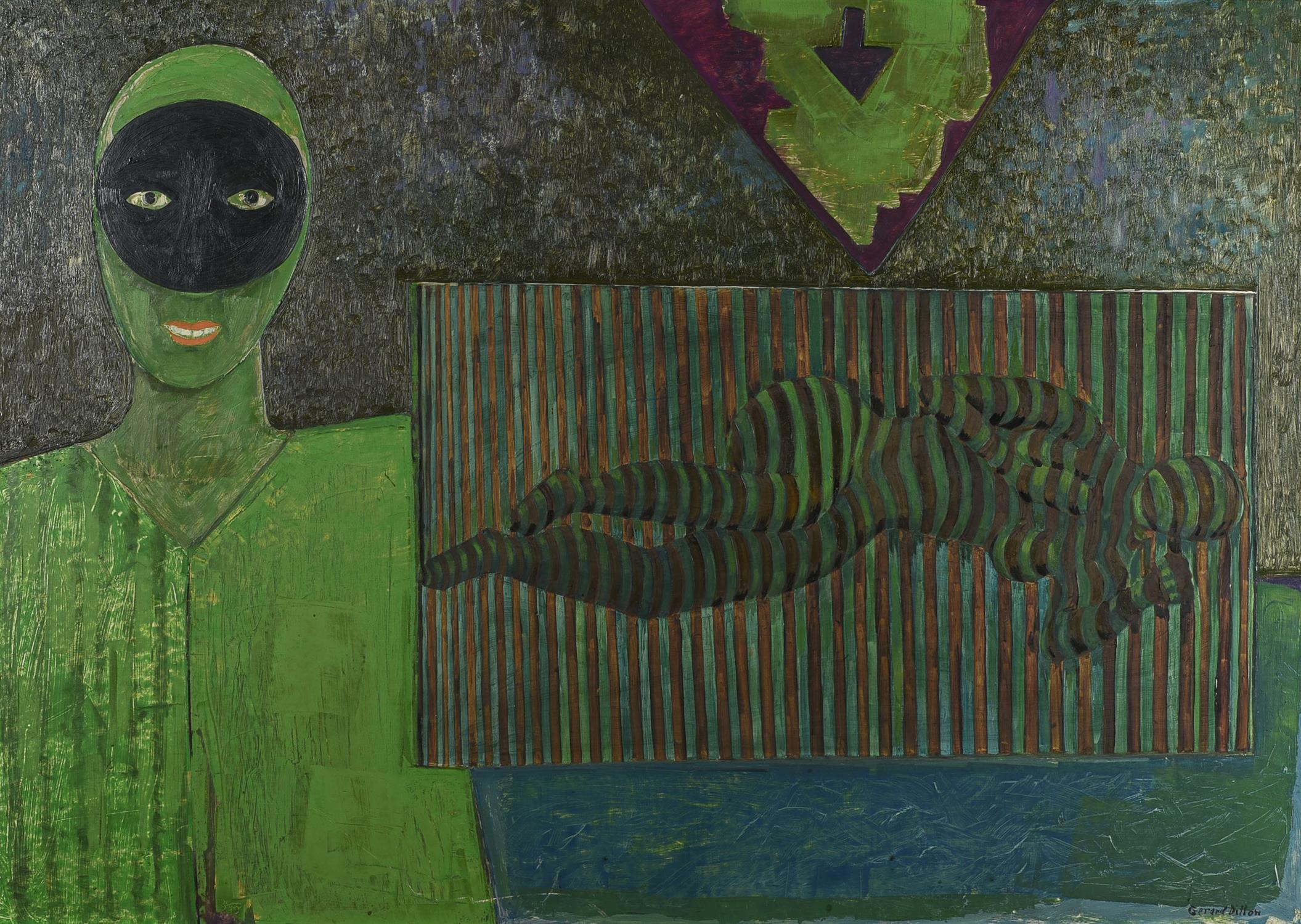

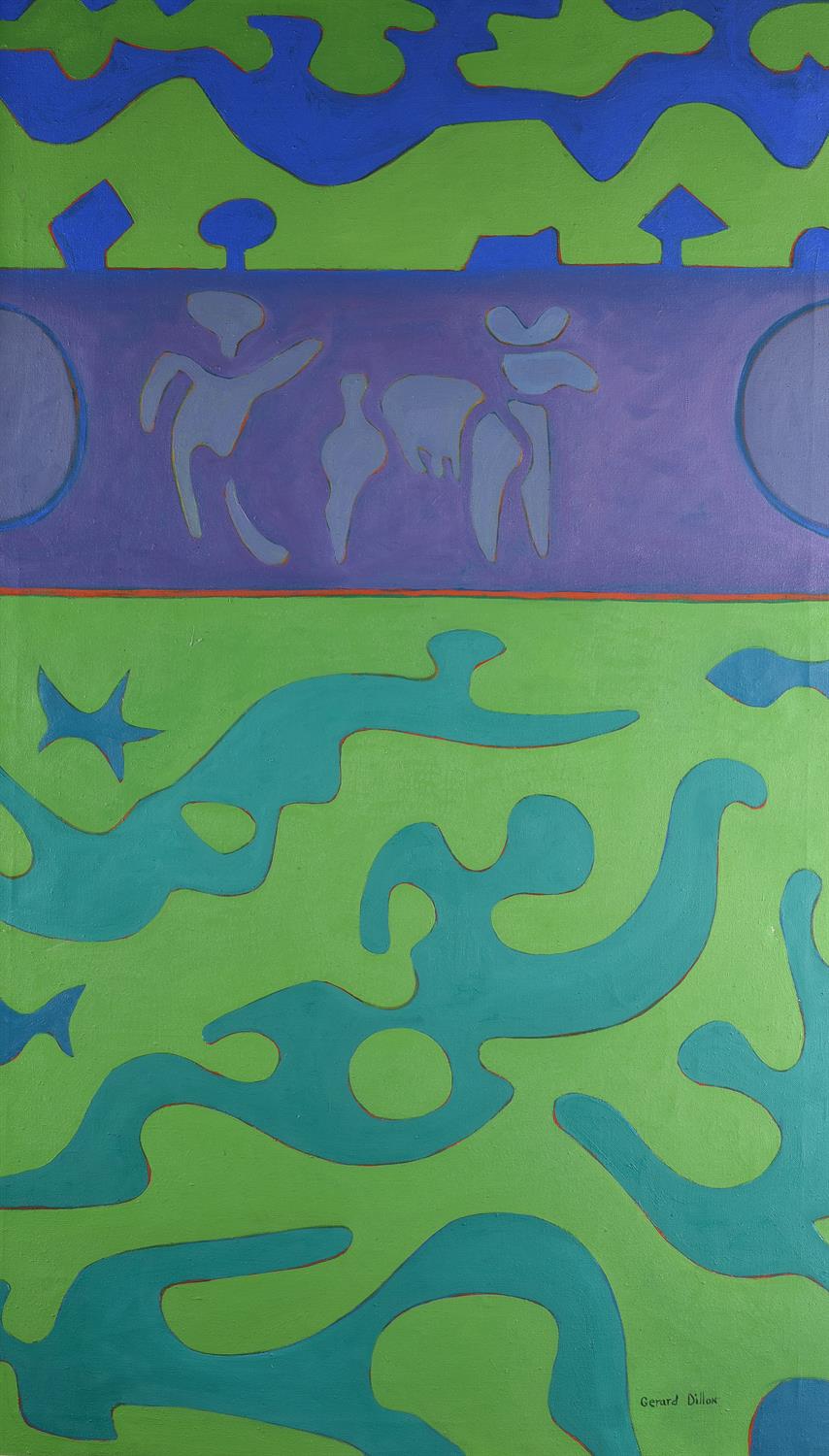
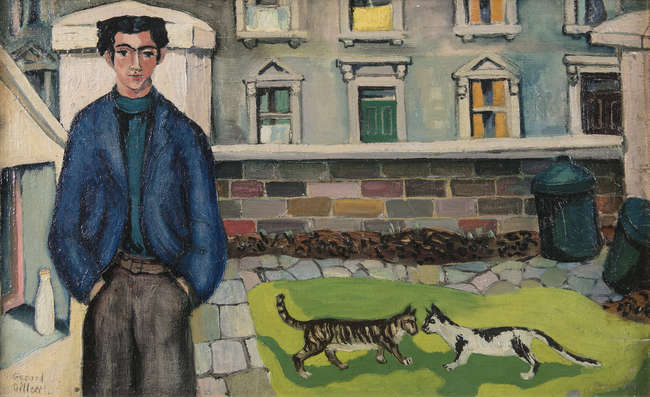
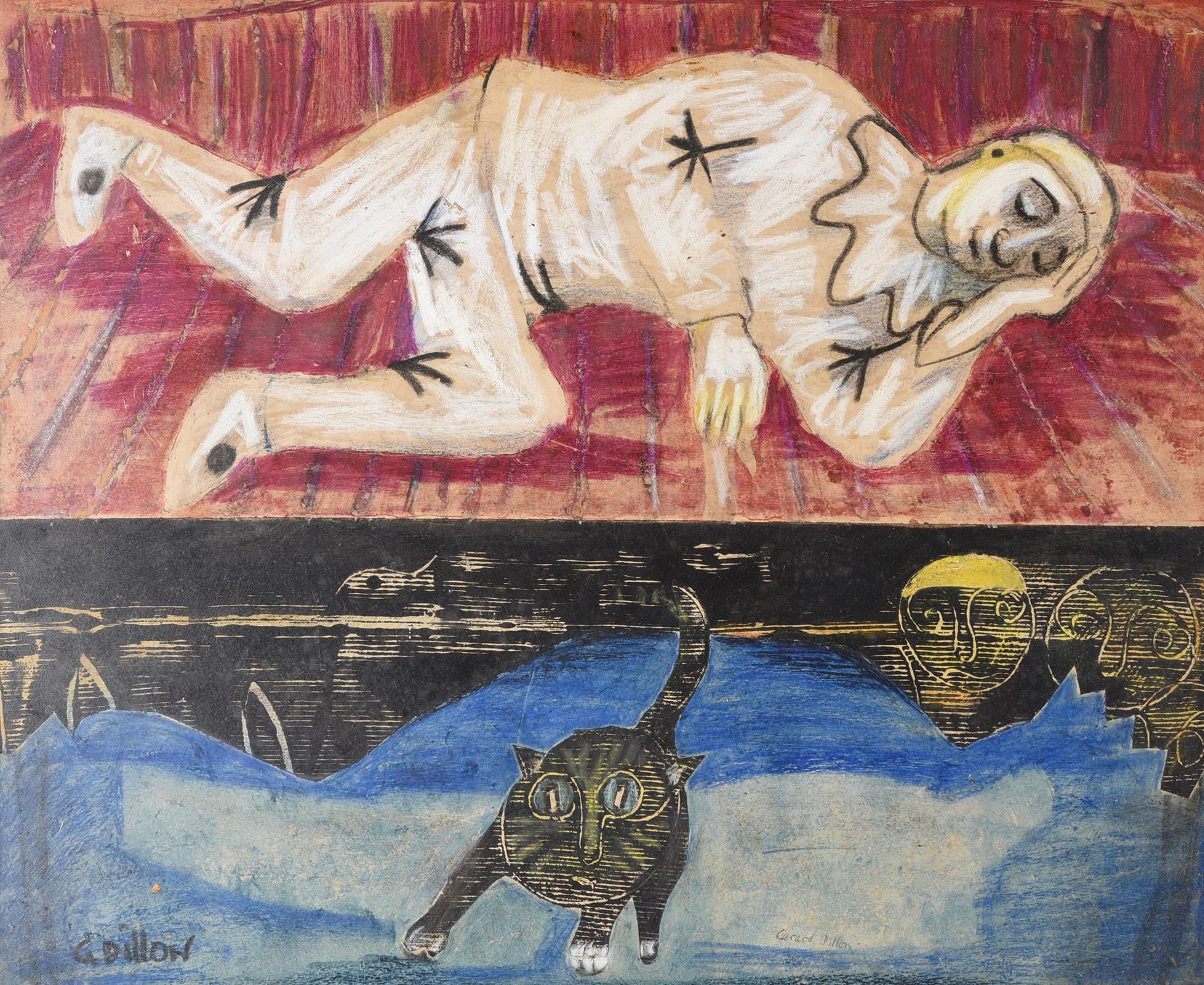
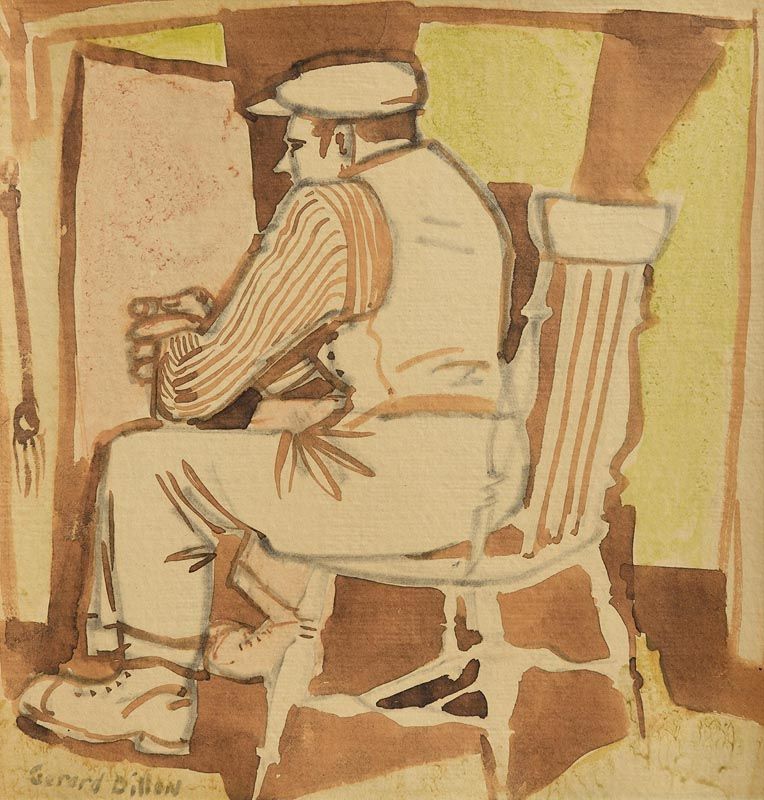
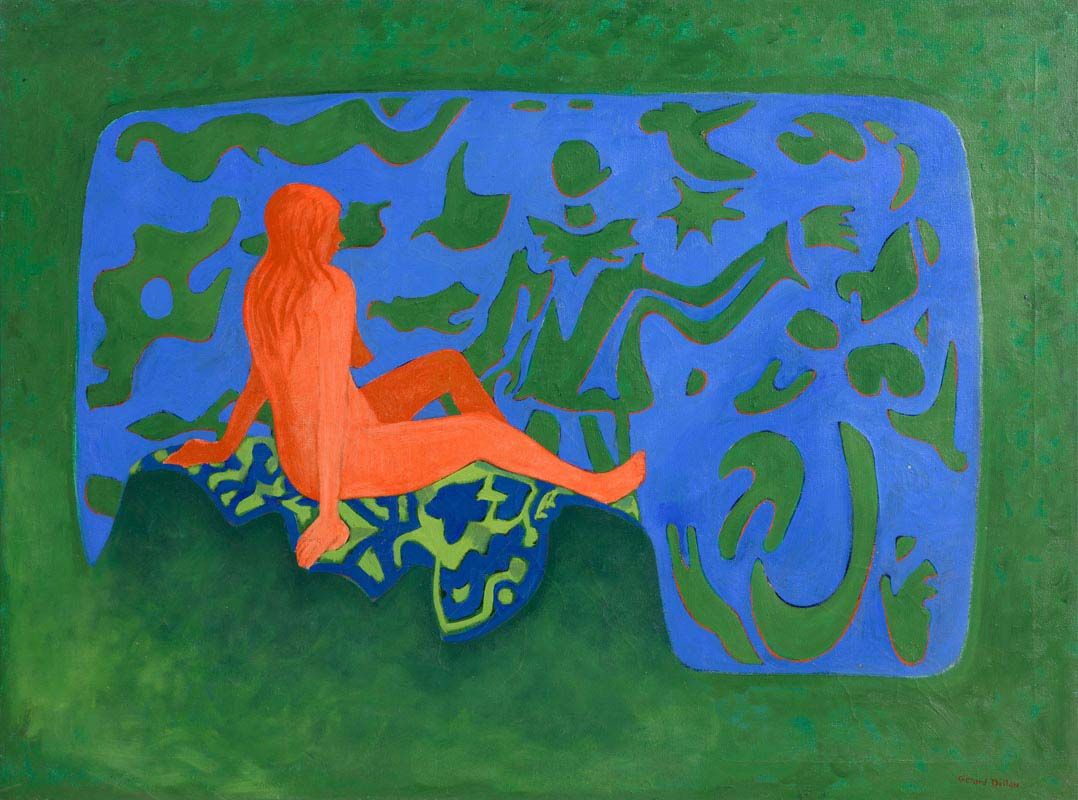
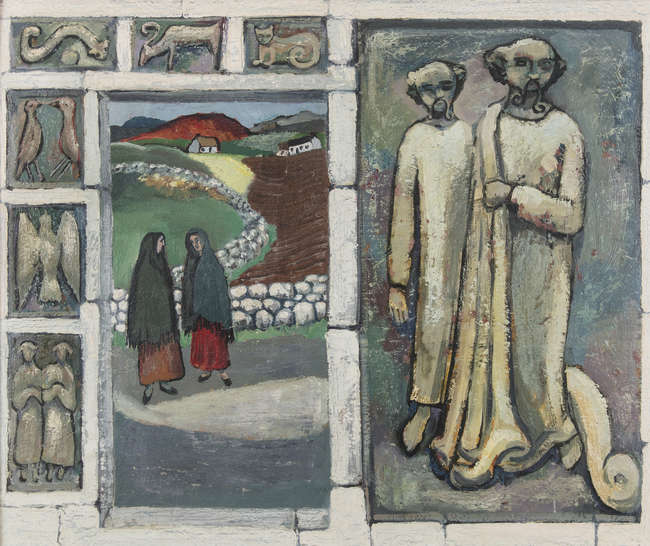


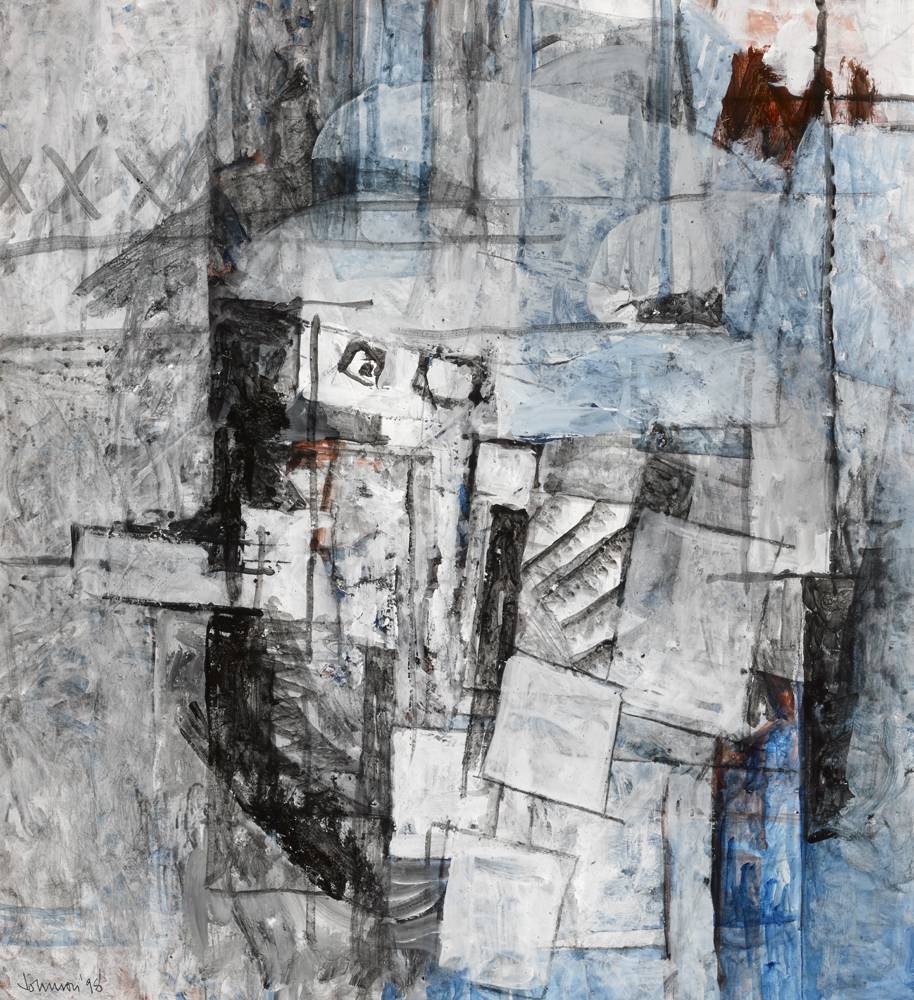

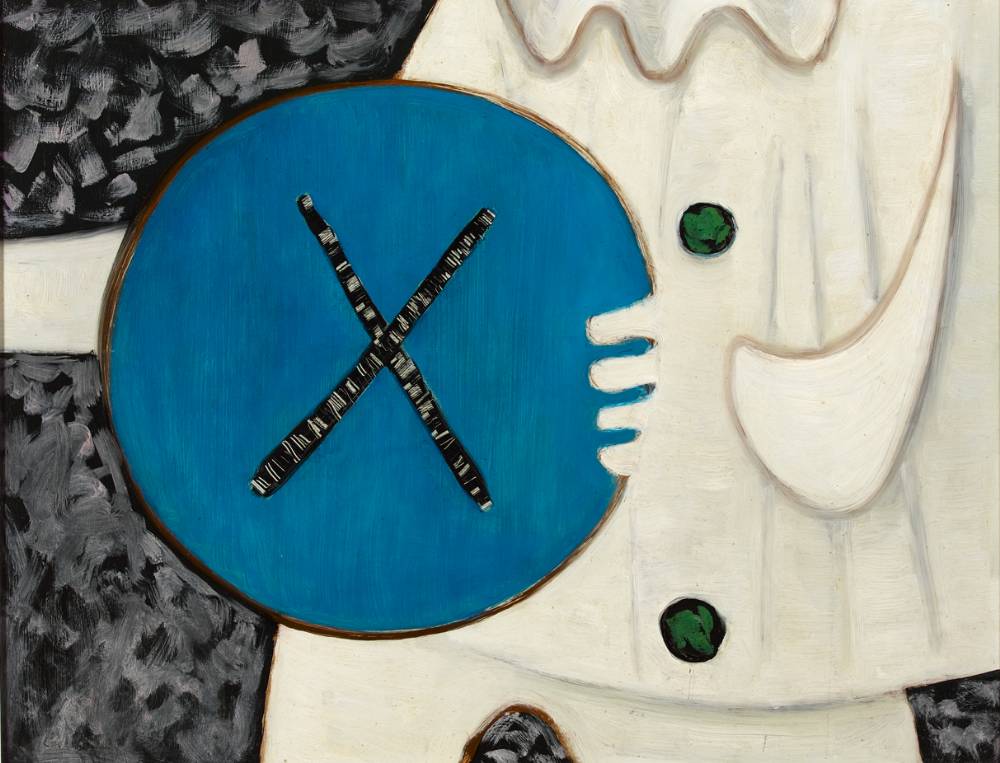
Try LotSearch and its premium features for 7 days - without any costs!
Be notified automatically about new items in upcoming auctions.
Create an alert